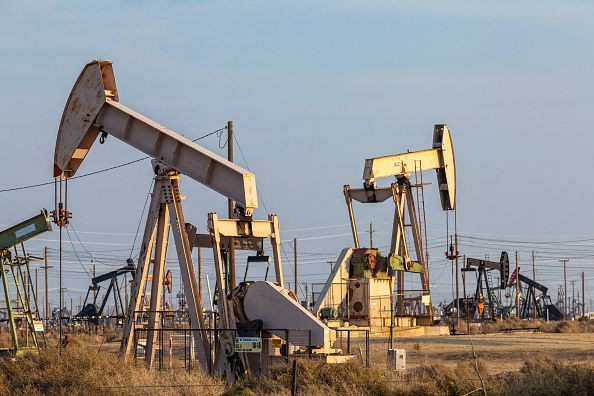The Oil Market Is Entering A Danger Zone

The oil market has undergone a stunning turnaround in the last few years. It wasn't all that long ago that crude prices were sliding toward the abyss because the market had more oil than it could use. Now, "we really need more oil," according to comments by Fatih Birol, the executive director of the International Energy Agency, in an interview with Bloomberg this week.
This article originally appeared in The Motley Fool.
In his view, "the oil markets are entering the red zone." That's because falling supplies from places like Venezuela and Iran could leave the market short of the oil it needs to meet demand. If that happens, crude prices could spike, which could wreak havoc on an increasingly fragile global economy. That could destroy demand for crude, which would hurt producers in the long run.
How we got here
The price of oil has gone on a blistering run since bottoming out in early 2016, with Brent, which is the global benchmark, surging an astonishing 210 percent from its bottom, recently topping $85 per barrel. Driving that epic rally has been the shift from having more oil than the market needed to just enough to meet demand due to the efforts of OPEC and other major producers to hold back some of their output.
However, while the market has enough oil right now, that situation might not last. One of the drivers of this view is the fact that oil production from Venezuela, which holds the most oil reserves in OPEC, continues falling off a cliff. Output from the South American nation hit a 30-year low earlier this year due to the country's mounting economic crisis, and could soon fall below 1 million barrels per day (BPD), which is a steep decline for a country that had produced more than 3 million BPD in 2011.
Meanwhile, supplies from Iran are already dropping ahead of the new U.S. sanctions, which take effect next month. Exports fell 11.5 percent last month to 1.7 million BPD, which was a two-and-a-half-year low according to an analysis by S&P Global Platts. More Iranian oil could soon leave the market according to S&P Global Platts, which sees supplies dropping to just 800,000 BPD by the end of next year, a sharp decline from the 2.9 million BPD the country shipped this past April.
Looking for barrels to spare
Given those issues, Birol would like to see the Saudi Arabia-led coalition of producers boost its supply. While the group hiked their output by 1 million BPD in June, they're still holding back about 800,000 BPD of supply and have even more capacity in reserve. He'd like more of that oil available to the market so that there aren't any shortages later this year.
Outside of OPEC, there isn't any easy oil that the industry could quickly bring online to boost supplies. While drillers in the U.S. can rapidly drill new shale wells, there currently isn't anywhere for the oil to go due to the country's infrastructure constraints. That's partly because pipelines in the Permian Basin are nearing capacity. While companies like Plains All American Pipeline (NYSE:PAA), Phillips 66 Partners (NYSE:PSXP), and Marathon Petroleum (NYSE:MPC) are building new ones as fast as they can, most of them won't come online until the end of next year, though Plains All American does expect to finish one of its projects next month.
Meanwhile, the industry also lacks the export capacity to move the abundance of U.S. oil overseas. Phillips 66 Partners and Marathon Petroleum are building more export capacity along with their new oil pipeline out of the Permian. However, they won't finish it until the end of next year. Because new export capacity won't come online anytime soon, the U.S. can't help solve the world's oil problems. Those capacity issues are hindering the industry's ability to fully enjoy the uptick in oil prices, since it's causing crude in the U.S. to sell at a $10-a-barrel discount to Brent, which is costing the industry $100 million per day.
Buckle up
The oil market has quickly flipped from having too much crude to barely having enough to meet growing demand. Because of that, there's increasing concern that the market could run short of oil in the coming months unless producers pump more. Those in the U.S. can't right now due to infrastructure constraints, leaving OPEC as the only thing standing in the way of crude continuing its charge toward $100 a barrel. It's unclear yet if it will heed the calls and turn on more pumps. Because of that, the oil market could be in for a bumpy ride the rest of the year.
Matthew DiLallo has no position in any of the stocks mentioned. The Motley Fool has no position in any of the stocks mentioned. The Motley Fool has a disclosure policy.





















